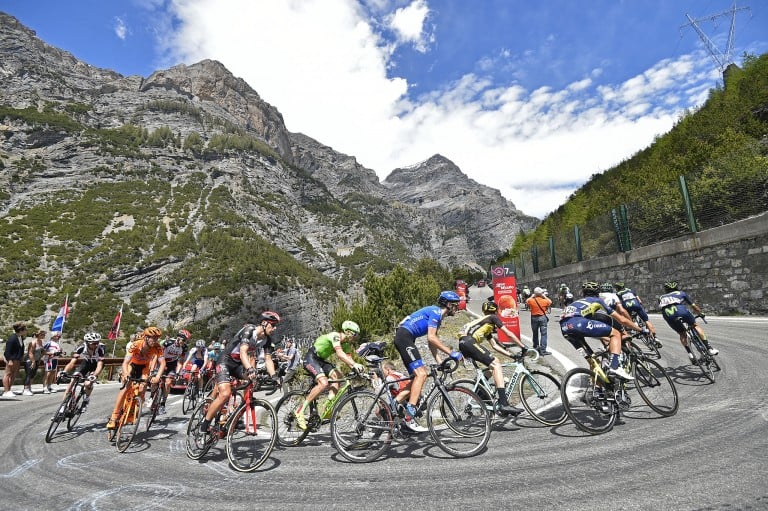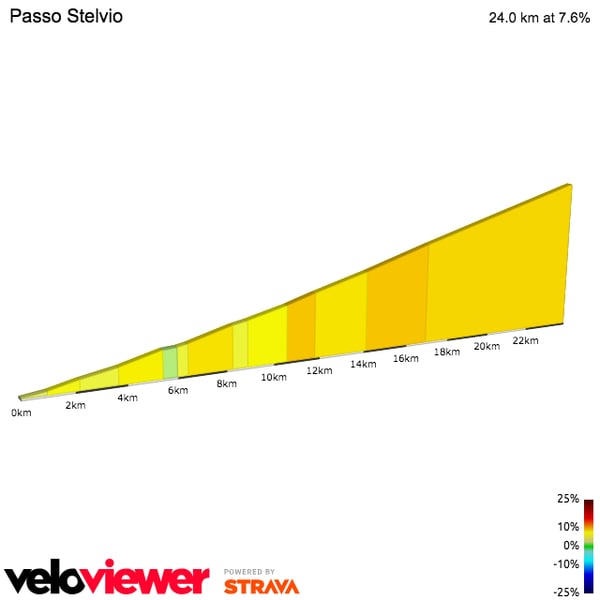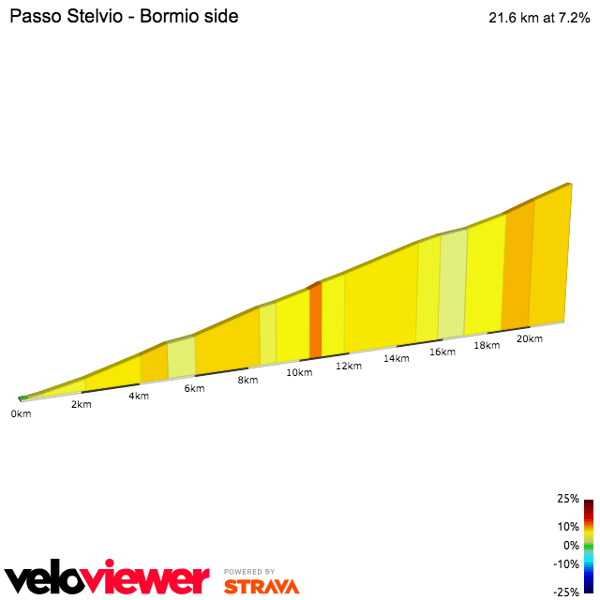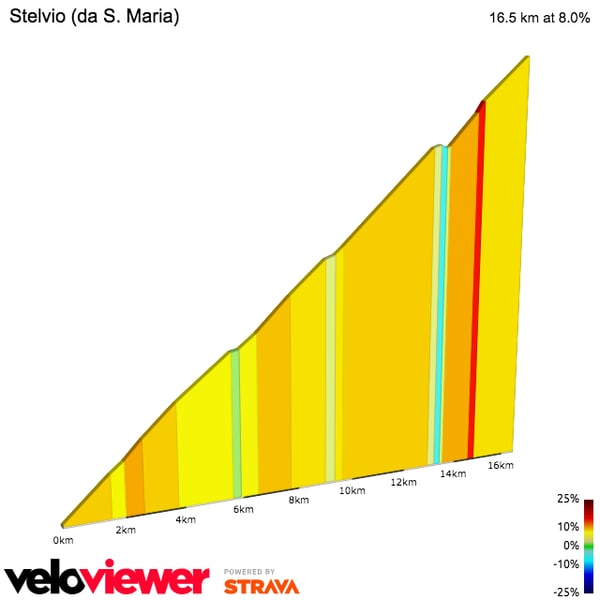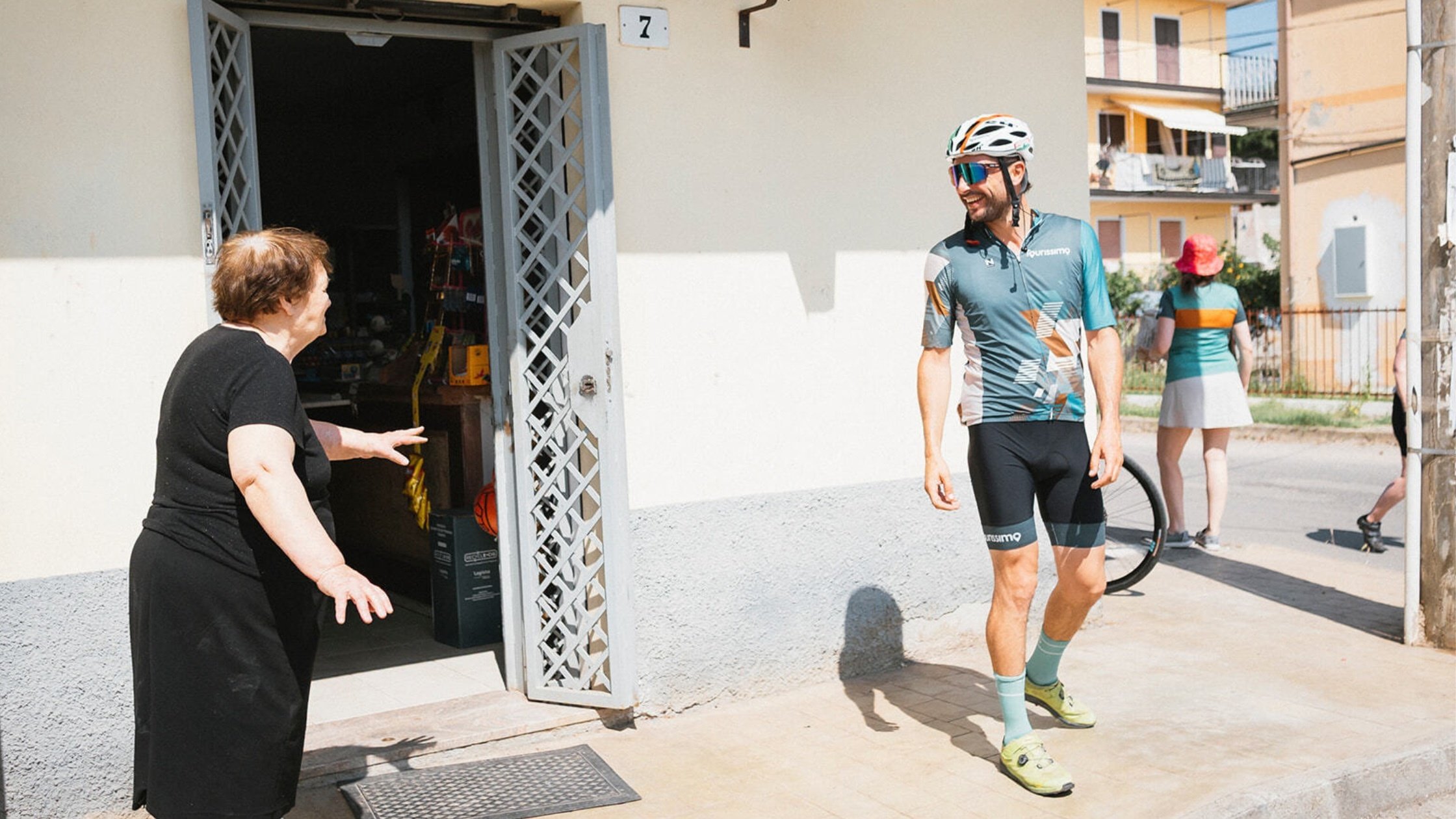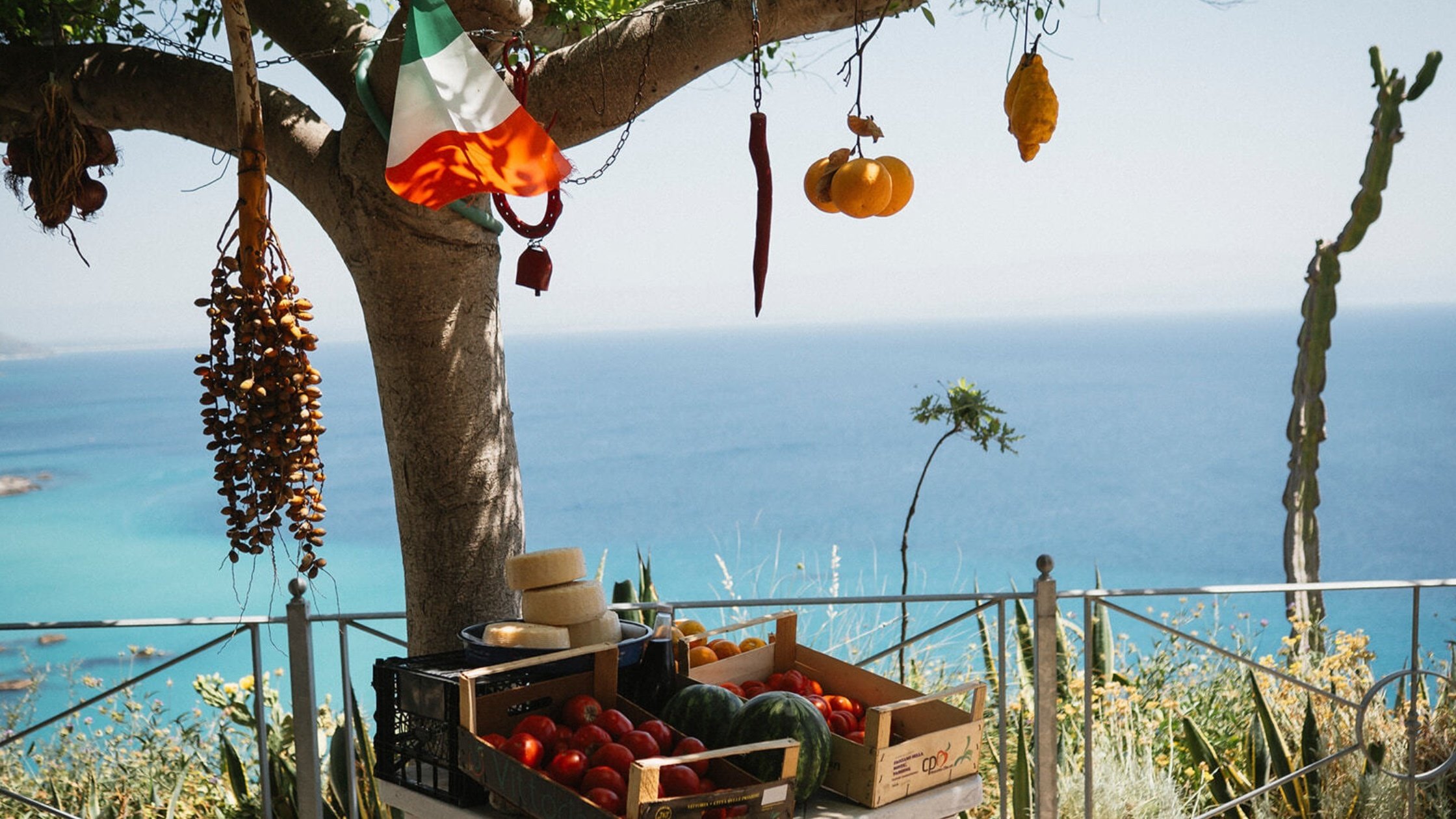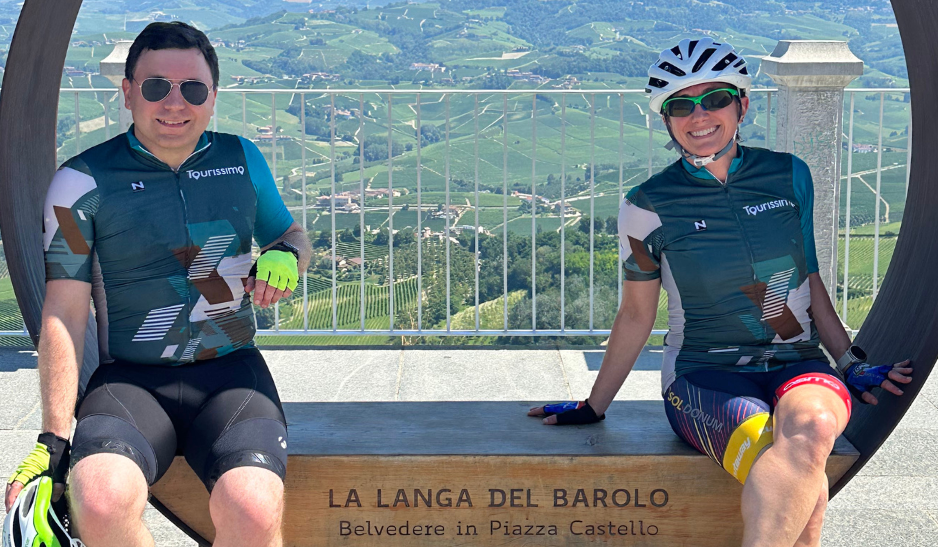Climbing big mountains by bike is one of the cruelest yet most rewarding things you can do using your body’s athletic abilities. Some climbs become lifetime goals and conquering them fills the imagination of any rider who has embraced mountain riding. These climbs are also a great excuse to travel halfway around the world for a bike trip. One of these climbs is the Stelvio, the king of Dolomitic passes.
Easily, Stelvio is for cycling what Everest is for mountain climbing: an iconic place that everyone into the sport knows about and refers to with both familiarity and deep respect.
Stelvio has always been a physical and political border. I find it very interesting climbing on one side and descending down another side to land where the culture is distinctly different and another language is spoken. I love the lively atmosphere at the pass. How fun that on such a high mountain pass there are restaurants, shops selling cheap Stelvio jerseys and gadgets, food carts selling sausage, and even a bank that proudly claims to have the "highest ATM of the Alps." It's like a party!
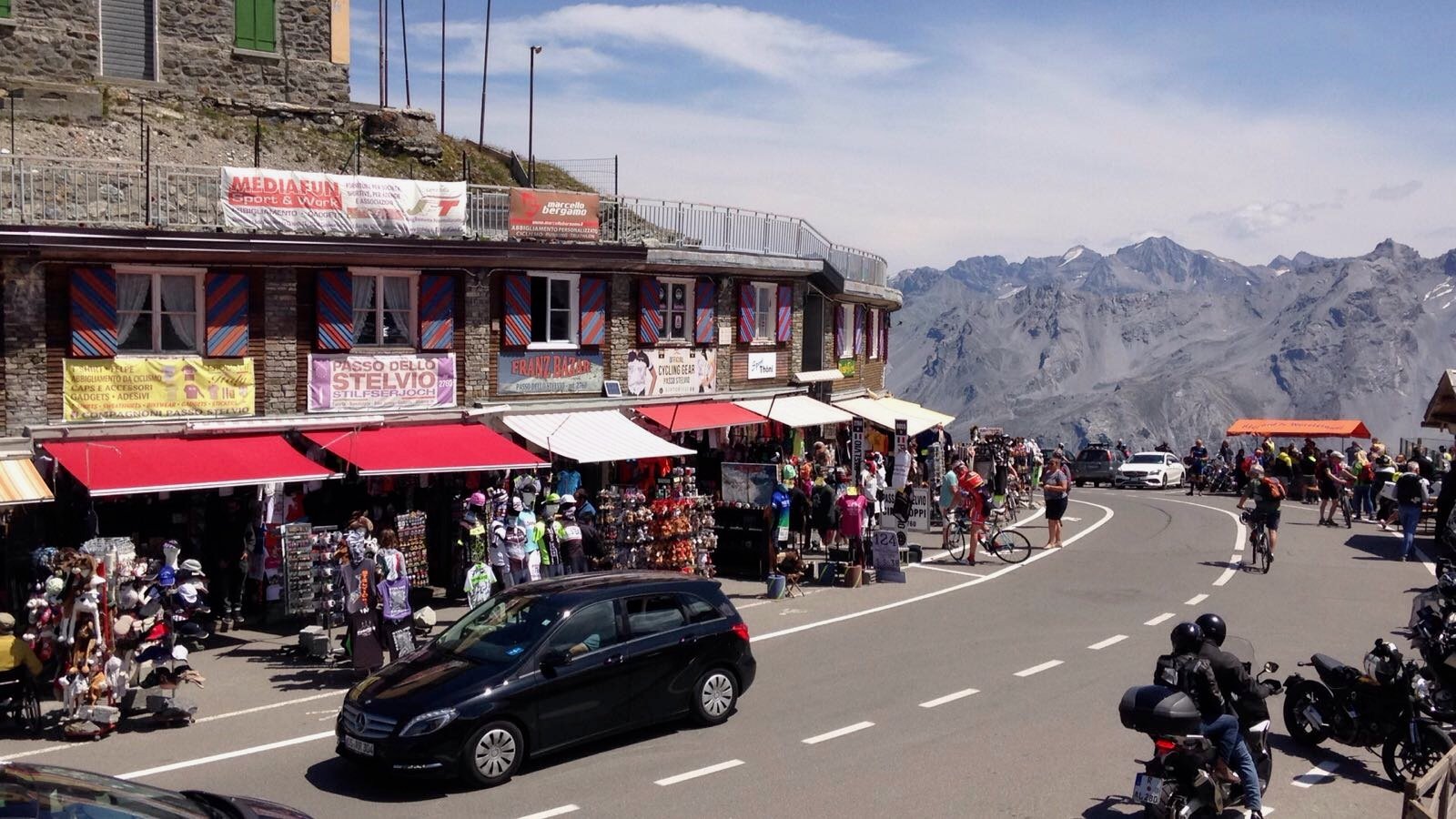
Stelvio Pass always makes it onto lists, such as the most scenic roads on the Alps, the highest passes in Europe, the toughest climbs in the world. Civil engineers will find another list interesting: List of highest paved roads in Europe.
I’d been playing with the idea of a Dolomites cycling tour for two years and after several revisions created a Tourissimo Dolomites itinerary. Check it out here.
Stelvio Pass (m 2,758)
The Stelvio Pass (2,758 m - 9,045 ft) links Lombardy to Switzerland and the South Tyrol (German speaking Italian region). The pass belongs to the municipality of Bormio and the area surrounding it is part of the Stelvio National Park. The Stelvio Pass usually opens in the second half of May and closes during the first days of November. However, weather can be unpredictable and I have witnessed snowstorms in the middle of the summer.
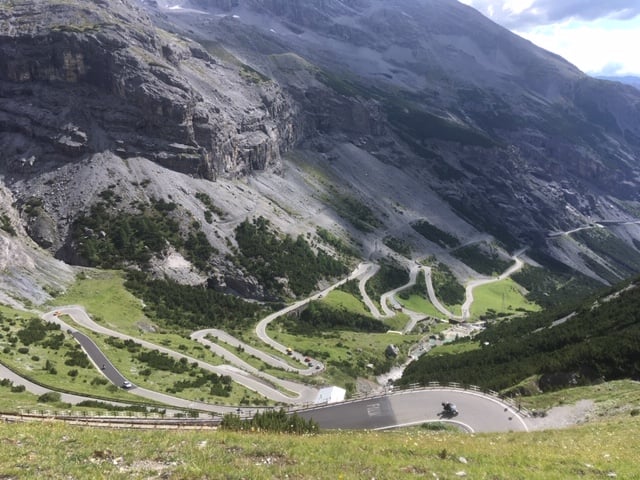
Prato allo Stelvio Side
History
The history of the Stelvio is very much linked to WWI because it was at the forefront of the terrible trench war fought in the ice and snow in the area. The original road was built between 1820–25 by the Austrian Empire to connect the former Austrian province of Lombardy with the rest of Austria, covering a climb of 1,871 m (6,138 ft). The engineer in charge of the project was Carlo Donegani (1775–1845). Since then, the route has changed very little (Wikipedia).
What is the Cima Coppi and what does it have to do with Stelvio?
Fausto Coppi was the legendary Italian rider who (with his rival Gino Bartali) instilled cycling in the DNA of Italians during the 30’s and 40’s. Back then, the biggest sport was cycling (not soccer) and everyone waited with trepidation for the Giro and the Tour. Coppi was an unbeatable climber and won five editions of the Giro d'Italia. The Cima Coppi (Coppi’s summit) is the title given to the highest peak in each edition of the Giro d'Italia. The categorization was first introduced for the 1965 Giro d'Italia in honor of Coppi. The Cima Coppi changes from year to year, depending on the altitude profile of the Giro d'Italia, but the Cima Coppi par excellence is the Stelvio Pass, which is the highest point ever reached by the Giro. The Stelvio was used for the first time in 1953 when Coppi summited first. Then, in the 1956, 1961, 1965, 1972, 1975, 1980, 1994, 2005, 2012, 2014, and 2017 editions. It was also scheduled in 1965, 1988, and 2013, but in each case the course was modified due to bad weather.
The history of cycling was/is forged thanks the epic climbs of the Giro d'Italia. Those climbs include, of course, the Stelvio Pass.
Stelvio featured in the 2017 Giro d'Italia
A Pass with Three Routes
Having three different routes make it to such a high pass is not unique but it is unusual. There are three cycle routes to the Stelvio Pass: the South Tyrolean side, from Prato allo Stelvio, the Lombardy side from Bormio and the Swiss side from Santa Maria (in Val Monastero) over the Umbrail Pass. Click on the elevation graphics for a technical description.
The Climb of Stelvio Pass from Prato allo Stelvio
The South Tyrol ascent is the hardest climb and the classic route up to the pass for cyclists. The starting point is Prato allo Stelvio (918 m) and the climb is 25 km long, with a gradient that increases in the second half. The first 8 km are the easiest, with an average grade of around 5%. Things get serious when you encounter the first of 48 hairpin bends and you face reality: it’s a long way up.
Gradient settles at a steady 8%. Once you leave Trafoi behind you, the gradient in the uphill climb becomes more challenging, but the stunning views of the Ortler Mountains help you to overcome your fatigue. The final part of the climb is regular, but maximum effort is still required to conquer those last hairpin switchbacks. It’s an incredibly well designed road and the views are stunning (you get to appreciate them from the top). Nearing the top (about 3.5 km away) you are able to clearly see the buildings at the pass and that helps with reaching the goal and not giving up on those tough final miles. The bends are numbered backwards from the pass so that you always know how many you have left until the top. The average gradient is 7.4%, the maximum gradient is 11% and the vertical drop is more than 1,800 m. Downhill video Prato allo Stelvio side filmed with by friend Henry.
My tip- It’s an absurdly long climb. Take the first hour of climbing as a warm-up.
The Climb of Stelvio Pass from Bormio
The ascent from the Lombardia side begins in Bormio 1,225 m asl and is 21 km long. Despite often being referred as "the other side of Stelvio" it’s just as epic. The climb starts immediately with a challenging gradient and that’s not a good way to warm up. Between km 7 and 10 you will find a number of small - somehow lit - tunnels partially carved out of the rock. Take your sunglasses off and wear a bright vest if you have it. Just after the tunnels the steepest slopes (up to 14%) follow.
This is the part where I always suffer the most. You are going to have to switch off the pain detector and carry on. Now you have reached the central part of the climb to the Stelvio Pass, where, after a series of switchbacks, you are getting ever closer to the top. After 15 km you reach a moderate part of the ascent lasting about one kilometer. You will have a "Casa Cantoniera" on the left (building formerly used for road maintenance) and a WWI monument on the right. It’s a good time to take a breather because the last 4 kilometers are probably the most difficult part of the climb. After the fork for Switzerland (Umbrail Pass), continue right and up. From here you can see the final part of the climb to the Stelvio Pass. It’s the hardest portion with gradients over 8%. The total average gradient is 7.3%, the maximum is 14% between km 10 and 11; the vertical drop is more than 1,500 m. You can see below a video of this climb with the tunnels from 2:31 (video credit Henry van den Broek).
My tip- Don’t push when things get easier around km 15 but rather recover and refocus. Refuel - if you carried a gel up to here it’s time to use it - and prepare for the last 4 km.
The Climb from Santa Maria over the Umbrail Pass
The third ascent to the Stelvio Pass is for the most part in Switzerland and on Swiss roads. It’s the lesser-used climb cycling wise and the shortest with 16.5 km (I’ve only done it going down). It starts in Santa Maria (1,375 m) and reaches the SS39 via the Umbrail Pass. The way to the Umbrail Pass (2,503 m), on the Italian-Swiss border, is about 13 km long. It is a narrow, well-maintained road; the last 500 m are on a well-packed dirt road, which has become a characteristic of this climb.
Once you get to the top of the Umbrail Pass, there’s a fork and only about 4 km and about a 250 m vertical drop separate you and your bike from the pass. The other way would take you down to Bormio. The average gradient is around 8% and the vertical drop is almost 1,400 m.
The Stelvio Pass is a very popular destination among cyclists who, while riding their bikes, personally challenge themselves along the legendary mountain roads of the Giro d'Italia. Traffic can be an issue at times. Motorcyclists love Stelvio as much as cyclists.
There are a handful of events that allow cyclists to ride on closed roads:
Which Gears for the Stelvio?
The lowest possible. I am at ease with a 34x32. As a side note, Tourissimo’s Bianchi's can be customized with mountain gears (34x36).


